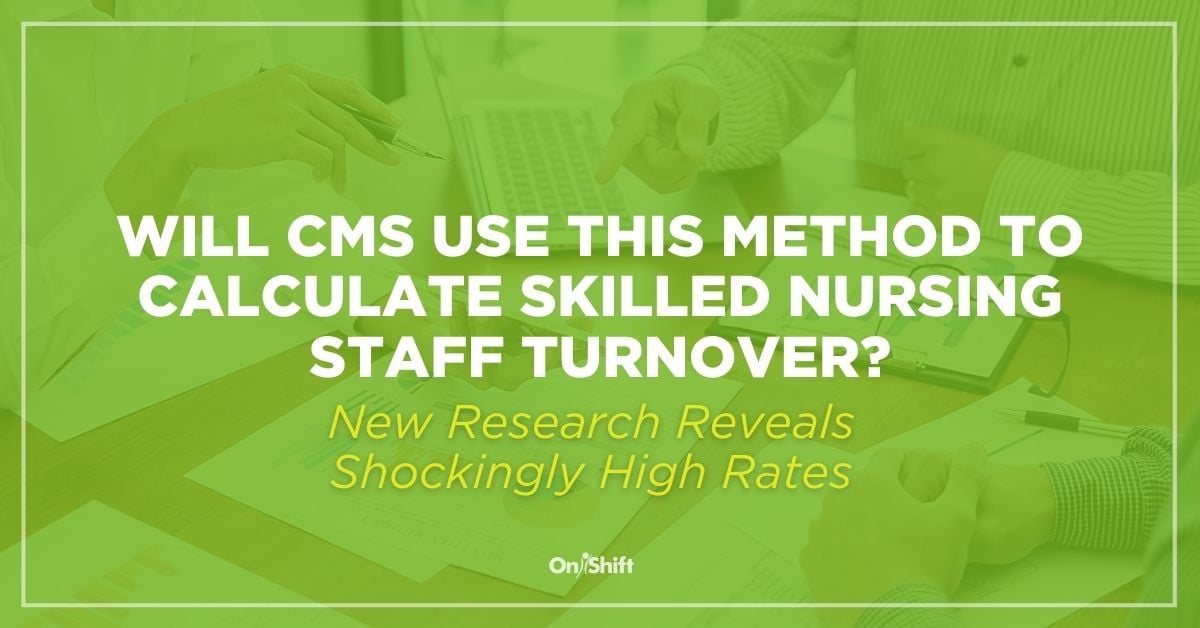March 17, 2021 | Peter Corless
March 17, 2021 | Peter Corless
 You may have seen the March 2nd article in McKnight’s Long-Term News titled, “Alarming” nurse turnover rates linked to quality, payment woes in major new nursing home study.
You may have seen the March 2nd article in McKnight’s Long-Term News titled, “Alarming” nurse turnover rates linked to quality, payment woes in major new nursing home study.
The data referenced appeared in a Health Affairs study written by researchers from the University of California Los Angeles and Harvard Medical School using employee-level Payroll-Based Journal data. The calculations factor in 2017 and 2018 data from virtually all U.S. nursing homes and researchers weighed the amount of direct care nursing hours provided to residents.
Here are a few key findings from this research:
As McKnight’s reports, “Previous studies — limited by lack of data, self-selecting surveys and small sample sizes — found wide turnover variations. The largest, however, cited averages of 78.1% among CNAs, 56.2% among RNs and 53.6% among LPNs.”
It’s not hard to understand why this discrepancy in the different data sets exists. As an HR executive and association board member in the post-acute healthcare profession for more than 20 years, I know first-hand that obtaining accurate staff turnover data has been historically vexing for many reasons.
First and foremost, we’ve always been challenged by lack of a standardized method for measuring turnover. Most commonly, it has been calculated by dividing the number of employee terminations by a starting employee count, ending employee count or an average employee count. However, there are many other factors that come into play. For example, some providers don’t include casual/PRN staff in their turnover calculation, which deflates their turnover percentage. Others don’t include employees who term in the first 90 days of employment.
Even when associations have tried to gather turnover data using a consistent measure, sample sizes in studies were typically small and voluntarily provided by facilities and companies such that the results were not necessarily representative. For example, organizations with high turnover might have chosen to exclude themselves from such initiatives.
The researchers in this latest report had access to daily staffing hours from 15,645 nursing homes and could examine the amount of direct care employees delivered in the three months before their separation, which is a vast improvement in terms of sample sizes. Another interesting thing about this report is that the researchers created a ‘novel’ way to calculate turnover. They weighed turnover by the amount of care an employee provides relative to the total care provided, a method the industry has not used in the past.
For example, say a facility has three employees – a full-time employee working 40 hours per week, a part-time employee working 20 hours per week and a casual/PRN employee working 10 hours per week. In this case, there would be a total of 70 hours of care provided. Typically, turnover calculations have treated all three of these employee departures equally. If any of the three were to leave, the facility would have considered it a 33% turnover rate. However, in this study, if the full-time employee were to leave, the researchers reported 57% turnover (40/70), followed by 28% for the part-time employee leaving and 15% for the casual employee.
Essentially, they are weighing the amount of care provided by the departing employee relative to the total. Therefore, the more hours of care the departing employee provided, the greater the impact on turnover.
This new approach clearly depicts the impact an organization's rate of turnover has on the care they provide. It also lends itself to the question, Is this new way of calculating turnover the reason why it reports significantly higher rates than the traditional calculations and historically reported rates? Interestingly, the researchers suggest the answer is “no.”
“Notably, we found that an unweighted measure typically resulted in higher turnover rates because of the inflated importance of turnover in nursing staff members who provide relatively few hours of care,” the report stated.
When companies utilize their own unique method of calculating turnover, although it makes it difficult to compare rates from one organization to another, it does enable companies to see the change over time. They can then determine if their policies, processes, pay, benefits, etc. are having the desired impact of reducing overall turnover. This new report, on the other hand, does provide an apples-to-apples comparison using the most objective and reliable data available to date and will allow for future trending. However, unless providers adopt the same methodology to calculate their turnover, they won’t know how they compare to the overall results in the report. It is also interesting to look at the correlations the researchers report on turnover relative to 5-star ratings, payor type, ownership type and the like.
What The Future Might Hold: CMS & Turnover Data Reporting
CMS has long said that they will report facility-level turnover rates on Medicare.gov/care-compare. It will be interesting to see if when this becomes a reality, CMS will use this same methodology for their calculations. In the meantime, providers should remain laser focused on reducing turnover -- which we are all well aware can have a significant impact on care outcomes.
Subscribe to the OnShift Blog
Recent Posts
Categories
About Peter Corless
Peter Corless is Executive Vice President of Enterprise Development for OnShift. Peter is a recognized HR leader in post-acute care and is well-known for his achievements at some of the country’s largest post-acute care organizations, including Kindred Healthcare and Genesis HealthCare. As an experienced, chief administrative and human resources officer within these organizations, he developed strategies that reduced turnover, improved recruiting and hiring strategies, and reduced labor costs.
See for yourself why thousands of providers rely on OnShift’s innovative software for recruitment, hiring, workforce management, pay and engagement. Request your personalized demo today.
